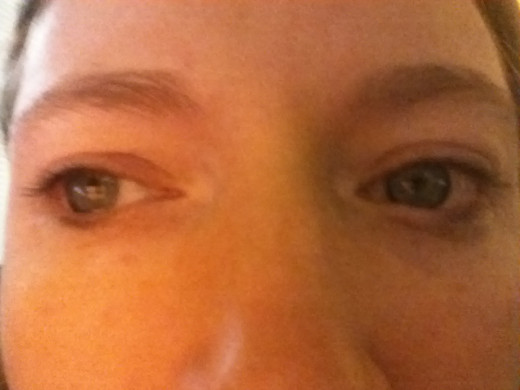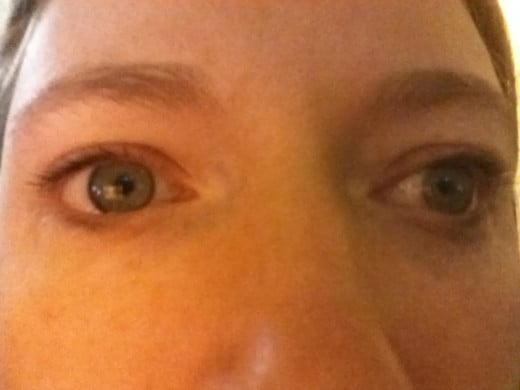What Is Strabismus and How Do You Cope?
![By Nikolay Mylnikov [Public domain], via Wikimedia Commons By Nikolay Mylnikov [Public domain], via Wikimedia Commons](https://usercontent1.hubstatic.com/8294632.jpg)
Since I can remember, I've been using my strabismus (or wandering eye) to my advantage by entertaining people with a demonstration of my condition. Reactions range from, "oh that's so cool," to "eek, please stop, you're freaking me out!" I am fortunate that my condition has not significantly affected my eyesight and is intermittent (more on that later), but for some, the diagnosis can mean permanent sight loss in one eye or permanent misalignment of the eyes. This hub will explain what exactly strabismus is and how to cope if you think your child or another loved one has the condition.
![By Sandra Brown, M.D. - University of Michigan Kellogg Eye Center (The Eyes Have It) [CC-BY-3.0 (http://creativecommons.org/licenses/by/3.0)], via Wikimedia Commons By Sandra Brown, M.D. - University of Michigan Kellogg Eye Center (The Eyes Have It) [CC-BY-3.0 (http://creativecommons.org/licenses/by/3.0)], via Wikimedia Commons](https://usercontent1.hubstatic.com/8292186.jpg)


What is Strabismus?
Strabismus is a misalignment of the eyes in which one eye looks in one direction (usually straight ahead) while the other eye looks in another direction. The misalignment can be constant or intermittent (can switch or alternate between the eyes) as in my case where I can swap which eye is turning out and which is staying straight. The four main types of strabismus are esotropia (eye turns inward or crossed eyes), extropia (eye turns outward; this is what I have), hypertropia (eye turns upward), and hypotropia (eye turns downward). This common eye condition affects approximately 4 percent of the U.S. population, generally in children but can develop later in adulthood or as a result of an accident or other health condition. If left untreated or undiagnosed, a person can lose vision as a result of amblyropia, which is when vision doesn't develop normally (in childhood) because the brain and eye are not properly working together. Amblyropia generally develops in children with one weaker eye (sometimes called "lazy eye") with decreased vision causing the brain to eventually ignore the weaker eye because it is not receiving normal stimulation from it, favoring the stronger eye. If amblyropia is not caught and treated early on, the weaker eye can lose sight altogether.
Convergence insufficiency is also related to strabismus, often with an intermittent extropic misalignment. This condition is specifically the misalignment of eyes when focusing on a near object (for example, when reading). As in my case, intermittent extropia can be present when focusing at near or distance with convergence weakness and be well controlled, but primarily the misalignment is spontaneous and uncontrolled when focusing on close objects.
Causes and Symptoms of Strabismus
Strabismus results when the six external eye muscles (extraocular muscles) that control eye movement and position are uncoordinated or no longer work together. The interruption in coordination can be from neurological or anatomical problems, such as problems with the muscles themselves or problems with nerves or vision centers in the brain. Strabismus can also result from conditions like thyroid eye disease, cerebral palsy, Duane syndrome, Moebius syndrome, cataracts, or neurological and muscular abnormalities. Children of parents with strabismus also have a greater risk of developing the condition. There is still a lot unknown about the causes of strabismus and the most common type is idiopathic strabismus (arising spontaneously or from an unknown cause).
Strabismus is easy to spot because the misalignment of the eyes is usually obvious; however, small-angle strabismus (when the turn of the eye is less visible) has symptoms such as fatigue when reading, having a hard time reading, squinting or tilting the head, and unstable or jittery vision. It is common an infant's eyes to occasionally wander as their eyes haven't always completely aligned, but if it is happening often or the eyes cross inward, contact an optometrist or ophthalmologist for an eye exam.
Convergence insufficiency has similar symptoms like squinting or having a hard time reading, but it also can include headaches, blurred vision, double vision, sleepiness, sore eyes, and difficulty concentrating. Because people with convergence insufficiency can have normal, 20-20 vision, the condition is frequently unnoticed in routine exams. Often this condition is diagnosed after evaluations for learning disabilities due to reading problems.




Treatment for Strabismus
Treatment for strabismus includes surgery or non-surgical treatments like vision therapy. Surgery is generally the most effective treatment for constant misalignment, but an ophthalmologist specializing in strabismus can determine if that is the best course of treatment. During surgery, eye muscles are detached and then reattached in the proper place to realign the eyes. Depending on the severity of the misalignment, more than one surgery may be necessary. Generally surgery recovery is quick and children are able to get back to normal kid activities within a few days.
For more mild forms of strabismus (intermittent and small-angle strabismus), non-surgical treatments such as eyeglasses, patches, and vision therapy. Patching works by placing a patch over the stronger or normally functioning eye for a few hours a day to make the brain pay attention to both eyes rather than just the stronger one. Vision therapy includes several types of exercises or activities prescribed by a doctor such as use of prisms, filters, computerized activities, "pencil pushups," and metronomes. Pencil pushups are when you focus on the small print on a pencil held at arm's length and then slowly move the pencil closer, while still focusing on the print, until coming close or in contact with the nose. This was the only treatment I ever used or needed when I was a child. Rather than using a pencil, I actually used a She-Ra doll, which was far more entertaining. Pencil pushups are often recommended for convergence insufficiency and are most effective when performed at home as well as at supervised doctor visits.
Another rare treatment option is Botox injections. According to Children's Hospital in Boston, there are a few places in the country that will use Botox rather than surgery or if surgery has not worked.
Complications with Strabismus
Other than potential amblyopia mentioned previously, complications from strabismus include diplopia (double vision), attention deficit hyperactivity disorder (ADHD), learning disabilities, problems socializing, increased risk for myopia (nearsightedness), and possible increased risk of mental illnesses. Two studies done by the Mayo Clinic showed an increased risk of mental illness in children with extropia (3.1 times more likely) and congenital esotropia (2.6 times more likely) than the controls (children included in the study with no strabismus diagnosis). The first study, published in 2008, studied children in Olmsted County, Minnesota for a 10-year period. It concluded that children with intermittent exotropia and convergence insufficiency were 3.1 times more likely to develop mental illnesses, such as schizophrenia (particularly with a family history of the illness), depression, adjustment disorder, and eating disorders. The second study, published in 2012, retroactively studied a group of children also in Olmsted County for a 30-year period and found children with congenital esotropia were 2.6 times more likely to develop mental illnesses similar to exotropia patients (except for schizophrenia). Both studies admit there are limitations to the findings of the studies, for example only studying a single geographic area and a homogenous population (Olmsted County was almost 96 percent white at the time of the studies). More studies will need to be done to find out if the findings are due to environmental factors, hereditary factors, or in fact the condition.
Living with Strabismus
If caught early on, a child with strabismus can lead a relatively normal life. While I can't speak to more severe cases, I can say that my education and work has been minimally affected by my condition. I do have reading glasses to help with eye strain when reading or staring into a computer for long periods, but I am otherwise not inhibited. My eyes do fatigue more easily than most, but I find it is mostly when reading or staring at a screen close up, rather than every day looking around. I also suffer from migraines, but thankfully I get far fewer in my adulthood than I did as a child. I'm not sure if there is any correlation between strabismus and migraines or if some of my more minor headaches are from strabismus. I am also sensitive to light (common among red heads with pale eyes), which can often trigger a migraine and/or eye strain (because I have to squint a lot) resulting in my eye wandering more frequently.
Resources
http://www.geteyesmart.org/eyesmart/diseases/strabismus.cfm
http://www.allaboutvision.com/conditions/strabismus.htm
http://www.childrenshospital.org/az/Site1644/mainpageS1644P1.html
http://www.aapos.org/terms/conditions/38
http://www.ncbi.nlm.nih.gov/pmc/articles/PMC2762944/#!po=43.7500





